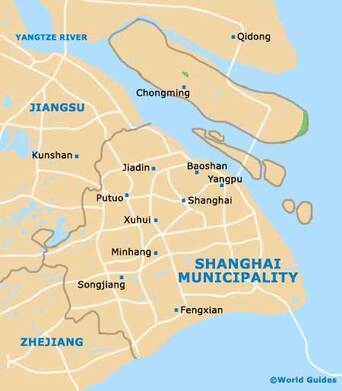-
Geopolitic of China
- Regional geopolitical political context
China’s districts (sheng), are the highest administrative division in People's Republic of China. There are 34 divisions of this kind, divided into 23 provinces, 4 municipalities (including Shanghai), 5 autonomous regions and 2 special administrative regions. Each districts has a provincial committee of the Chinese Communist Party, headed by a secretary. The Committee Secretary is responsible for the province instead of the governor of the provincial government.
Shanghai is the largest city of People's Republic of China in front of Beijing with 23,019,148 inhabitants, and 6 340.5 km2 area. It is administrated as a municipality directly under the control of the Chinese government, with provincial-level government status.

The Shanghai’s heads are
Mr. Yang Xiong, the Mayor

Mr. HAN Zheng, Communist Party Secretary

Shanghai is one of the most important economic and financial information centers of China. Its development is mostly because of its unique position at the mouth of the Yangtze (Blue River), which allowed the city to build into a major platform of international trade. Shanghai also takes advantage of the dynamism of its hinterland, which focuses almost ¼ of Chinese GDP. The city anticipate the pillars of the urban China of tomorrow.
- External regional conflicts or tensions
Regarding external conflicts, China is the enemy of many countries because of its regime.
- On of its major conflict is for the control of the South China Sea since 1970, especially for the Spratly Islands, due to the amount of resources it contains.
- Oppositions occur between Taiwan, China, Vietnam, Malaysia and the Philippines.
- There are tensions between China and India since the war of 1962, and for several reasons, such as maritime control or the Tibetan problem.
- As everybody knows, territorial dispute haven’t last yet with Japan, still linked with the maritime territory and the Senkaku and Diaoyu islands.
- The US has threatened to intervene in all these maritime disputes against China.
Many countries are therefore more or less in conflict with China, and particularly because of the maritime territory.
However, the country is founding many ways to avoid these conflicts, such as the creation of the Shanghai Cooperation Organization established in 2001, an intergovernmental organization which gathered Russia, China, Kazakhstan, Kyrgyzstan, Tajikistan and Uzbekistan.
It aims at improving relations between members, facilitating cooperation in major areas (political, economic, commercial, cultural, etc.) and especially preserve peace, security and regional stability.
- Internal conflicts or tensions in China
They are mostly characterized by :
- Rebellions and daily riots of the inhabitants who are opposed to the practices of the Party. The protests against the authoritarian regime are heard regularly. In the country, corruption is very strong, senior officials of the country are generally connected (often named) by members of the Chinese Communist Party. There is a ministry of propaganda which applies censorship on the means of expression such as the Internet, cinema or television. Censorship is routine in China, it is integrated into the country of the system. The facts of criminality and terrorism rather important in the territory are not highlighted. The Chinese Communist Party responds quickly to any threat to the regime. Nevertheless, this censorship admits limits, and in particular with the media that reveal truths that the Chinese government would rather keep quiet. The other parties that the official party have almost no existence.
The people seem to share in the country. While some appreciate the system by highlighting its role in the economic recovery, others criticize the increase in disparities and corruption present in everyday life.
- Conflicts with some regions who want their independence, such as Tibet, or with other regions in conflict with the central government such as Inner Mongolia and Xinjiang.
- Because many ethnic pressures (56 different ethnic groups in China), and the insistence of personal power. for example there is a suppression of other ethnic groups from those of the Han large majority in the territory. Xinjiang in particular, a major ethnic conflict is present with Uighurs.
- Inequalities and disqualifications due to migration. Shanghai heavily involved in a context of economic globalization and the migratory movement is increasingly high, which updates the phenomenon of growing inequality in China. Chinese provincial are immediately confronted with their arrival in town to situations of economic and social disqualification.
-
Commentaires
